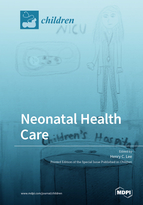Neonatal Health Care
A special issue of Children (ISSN 2227-9067). This special issue belongs to the section "Global and Public Health".
Deadline for manuscript submissions: closed (30 September 2020) | Viewed by 26928
Special Issue Editor
Special Issue Information
Dear Colleagues,
There is growing momentum in scholarly activities surrounding neonatal–perinatal health services research, which may encompass epidemiology, disparities, quality measurement, and quality improvement. The growing availability of large administrative and clinical datasets in neonatology have given us the opportunity to explore questions that may not be amenable to traditional randomized clinical trials. There is also an increasing recognition of the value of qualitative methods in order to gather and analyze data that are not available in large datasets.
Great progress has occurred in neonatology, both with advances in biomedical science and the integration of quality improvement activities. However, variation in practices and outcomes in our field continue to point to further work that can be done to implement evidence-based practice, and advance safer, more equitable care.
We invite you to contribute articles that concern emerging topics in neonatal health care to this Special Issue. Both reviews and original research will be considered for publication.
Dr. Henry C. Lee
Guest Editor
Manuscript Submission Information
Manuscripts should be submitted online at www.mdpi.com by registering and logging in to this website. Once you are registered, click here to go to the submission form. Manuscripts can be submitted until the deadline. All submissions that pass pre-check are peer-reviewed. Accepted papers will be published continuously in the journal (as soon as accepted) and will be listed together on the special issue website. Research articles, review articles as well as short communications are invited. For planned papers, a title and short abstract (about 100 words) can be sent to the Editorial Office for announcement on this website.
Submitted manuscripts should not have been published previously, nor be under consideration for publication elsewhere (except conference proceedings papers). All manuscripts are thoroughly refereed through a single-blind peer-review process. A guide for authors and other relevant information for submission of manuscripts is available on the Instructions for Authors page. Children is an international peer-reviewed open access monthly journal published by MDPI.
Please visit the Instructions for Authors page before submitting a manuscript. The Article Processing Charge (APC) for publication in this open access journal is 2400 CHF (Swiss Francs). Submitted papers should be well formatted and use good English. Authors may use MDPI's English editing service prior to publication or during author revisions.
Keywords
- neonatology
- health services research
- quality improvement
- disparities
- very low birth weight







